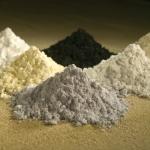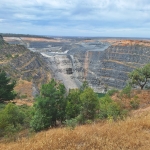Norsk Hydro: Global Compact Violator
In the sixth article in our series on Global Compact companies, Indian journalist Nityanand Jayaraman looks at the Oslo-based corporation Norsk Hydro, a partner in the Utkal bauxite mine and alumina smelter in Orissa State. He provides evidence that the corporation has violated human rights Principles 1 and 2 of the UN Compact. Nor has the company withdrawn plans for a project that would violate Principle 9 which promotes eco-friendly practices. While the company has put the project on hold for the moment, officials indicate that violations of these principles could resume at any time.
Late last year, Norsk Hydro, a Norwegian corporation with investments in light metals, oil, petrochemicals and agriculture, faced a crisis in the Eastern Indian state of Orissa. On December 16, three tribal men -- two aged 25 and one aged 45 -- were shot dead near their village. Nine others were seriously injured. The three who died were among several hundred local residents who were fleeing armed police.
The police were called in to quell protests against Norsk Hydro, which along with Canadian transnational Alcan and India's Hindalco, plans to mine bauxite on sacred tribal lands. The project would also process one million tonnes a year of bauxite through a joint venture with the company Utkal Alumina Industries Ltd (UAIL). The $1 billion project has lead to confrontation between the tribal villagers who stand to lose their lands and forests, and the company and its supporters, including the State Government of Orissa and the police.
Norsk Hydro's initial reaction to the killings was, on the surface at least, that of a decent company: "The three partners in Utkal Alumina International (UAIL) in the Indian province of Orissa have decided to temporarily curtail project activities pending a lower level of tension in the project area. As a condition for its participation, Hydro has said that the industrial development must be welcome and that it must not be necessary to perform the work with police protection."1
But that decision comes several years and three lives too late.
Hydro's response to the killings does not reveal its role in fuelling tensions leading to the protestors' deaths. Nor does Hydro explain that "tension in the project area" has been high ever since 1993, when the predominantly tribal population of this region first heard of Utkal's plans to mine bauxite. Yet the consortium has gone ahead with its plans. Nor does Hydro's statement acknowledge that this is not the first police action against the tribal opponents of the bauxite project. In fact, villagers maintain that harassment, police brutality and coercion have been the norm in forcing local residents to "welcome" industrial development.
A decision to curtail the project in light of the killings would seem the minimum one would expect of a company that has signed on to the human rights and environmental principles contained in the UN's Global Compact. But the failure to abandon the project in keeping with the wishes of the local people, means Hydro's behavior does not seem to reflect the spirit of the Global Compact.
For example, under Principle 1 of the Global Compact corporations agrees "to support and respect the protection of international human rights within their sphere of influence"; and Principle 2 requires them "to make sure their own corporations are not complicit in human rights abuses."
"Support and respect" for indigenous rights would cause Norsk Hydro and its partners to allow the adivasis (indigenous people) to decide whether they want this project on their lands. No Global Compact company should allow tensions to grow to the point where police violently repress dissent against one of its operations. That is complicity, according to human rights advocates.
Mining Ancestral Lands
For the adivasis the Rayagada district in Orissa, a mine on the Baphlimali Hill, connected by a 20 kilometer corridor to a 1 million ton per year alumina refinery, is bad news. More than 2100 families in two dozen villages stand to lose their land, including 370 families who would lose all their lands. More than 2800 hectares have already been acquired by the Government for the company.
Estimates of the people negatively affected by the Utkal project range from 750 (Hydro's estimate), to 3500 (Utkal's estimate) to 60,000 (Norwegian Agency for Development
Cooperation estimate).2
This is not the first operation to evict adivasis to get at the minerals beneath the farms and homes of the region. And the local people are aware of what is at stake. Barely 100 kilometers from the Baphlimali Hill is Nalco's bauxite mine/alumina smelter -- a mega industrial complex that has turned the area's adivasis from a self-reliant and proud community to landless ecological refugees -- within a period of just 10 years. Nearby, the large Hirakud dam built in the 1950s uprooted a large number of adivasis, many of whom were removed yet again when the lands that they fled to were found to be coal-rich.
Indigenous people throughout India have suffered disproportionately at the hands of India's non-tribal Government and people, ostensibly to develop the country. But nowhere is this injustice more evident than in Orissa. Some facts3:
Between 1951 and 1990, more than 26 million people have been displaced by dams, canals, mines, industries, thermal plants, sanctuaries and defense establishments. This does not include forced evictions caused by industry since 1990 when India embarked on its economic liberalization program.
Nearly 75 percent of those displaced since 1951 are still "awaiting rehabilitation," according to the government.
Tribal people constitute less than 8 percent of the country's population, but account for more than 40 percent of India's displaced people.
Mining in Orissa has created "an estimated 50,000 environmental refugees," according to news reports.
On the whole, 1.4 million people, mostly adivasis have been displaced by developmental projects in Orissa alone. New projects are expected to evict another 100,000 people.
What Did Norsk Hydro Know and When Did They Know It?
Hydro's statement after the killing of the three tribal villagers implies a certain naivet in the company's dealings in the area. But the chronology below indicates that this may be disingenuous. The adivasis' vocal opposition to the project and the brutal efforts to suppress this opposition were public knowledge a long time before the killings.
From the time that the project proposal was presented to the villagers in 1993, the people of Kucheipadar and Maikanch villages (two of the primary affected communities) have resolutely opposed the proposal. However, by 1995 land acquisition was already well under way, often violently, despite the fact that the Indian Constitution prohibits the transfer of tribal lands to non-tribals. The Norwegian NGO, Norwatch, has documented several instances of violence and coercion.
"The older landowners were physically forced to put their thumbprints on the piece of paper. The younger had to sign at gunpoint,"4 Banamali Majhi of Nuapara village told Norwatch.
When police arrested two youth in April 1994 for protesting against the company, hundreds of villagers from nearby villages attacked the police station and freed the young people. The battle between the state acting on behalf of the company, and the villagers seeking to protect their lands had begun in earnest.
In eight tumultuous years, the struggle of the people of Kucheipadar and Maikanch spread to more than 200 tribal villages in the vicinity. Road blockades, processions, disruption of survey work, even violent protest has punctuated the villagers statement that they did not want to see their ancestral lands mined.
"We are not interested in the compensation offered by the bauxite companies; we want to continue as farmers on this land which has sustained us for centuries," says Bidu Lata Huika, one of the conveners of the Orissa Tribal People's Forum.
The response of the government and the police has been consistently violent. In January 1998, 17 tribal people from the Kucheipadar district were injured when the police attempted to tear down a roadblock set up to prevent access for Utkal employees to the village lands. Despite the clear message from the tribal villagers, the Utkal partners, with the support of the government, continued with the formalities of licenses, permits and land acquisition.5
On November 16th, 1998, adivasis armed with clubs, bows and arrows waylaid Hydro employees Ivar Oellingrath, Dag Syltevik and Bernt Malme, and an Indian official. The four were forcibly taken to Kucheipadar, to a public hearing where local people complained about the impact of the project. The Norwegian executives were forced to sign a protest letter against their own company.6 Utkal reacted by postponing work on the bauxite mine until 2000.
Following the December 16, 2000 killings, an investigation, headed by the former Chief Justice of Calcutta High Court, D. S. Tewatia, found that the shootings were "premeditated and pre-planned."
The Tewatia Committee report found that "the entire State administrative machinery seemed to be working on the dictates of the powerful UAIL consortium. The police in particular appears to be functioning -- as is apparent from the firing of December 16 -- on the dictates of the pro-mining group rather than under the rule of law."7
It is unlikely that a company which managed to discover bauxite deposits in an obscure tribal village in India's hinterlands would be in the dark about how the government went about acquiring the lands the company required. Nor could executives of Norsk Hydro and its partners be unaware of the treatment meted out to the people opposed to their project. Their own experience should have led them to curtail the project before people were killed.
Environmental Disaster in the Making
One might argue that most of the human rights violations took place before the company signed on to the Global Compact in July 2000 (though the violations continued through December 2000.) But there are indications that the Utkal project, if allowed to go forward, would also violate Principle 9 of the Compact, which urges corporations to "encourage the development and diffusion of environmentally friendly technologies."
The Baphlimali Hills, where Hydro plans to mine bauxite, is the source of 350 perennial streams, including the tributaries that feed the Indravati River. To the adivasis of the region, Baphlimali is a sacred life-giver. Utkal's plans to mine 200 million tonnes of bauxite from the Baphlimali plateau would destroy this watershed.
Utkal has downplayed the importance of the ecosystem it plans to dig up, and has misrepresented sludge deposition rates in its application for environmental clearance. A government engineer has asserted that the mining activities would "threaten the life of the Indravati reservoir."8
Critics accuse Utkal of presenting misleading data about the region's economy and ecological status. A report in the Indian environmental magazine Down To Earth states: "The forested areas, needless to say, will face severe threats from the heavy construction and mining activities... it appears that UAIL's environmental assessment was merely a hastily performed routine, rather than a serious and detailed study of the social, economic and environmental impacts of the project."9
According to Norwatch, the deforestation caused by the mines and smelter will be aggravated because of the hilly terrain, resulting in more frequent flash floods, landslides, and nutrient enrichment of water bodies. Simultaneously, forest loss would also mean the loss of habitat for the region's wildlife including bears, jackals, wolves, sambars (a deer-like animal), spotted deer, leopard cats and the occasional tiger.10
However, Hydro and the government maintain that the 100 percent export-oriented bauxite-alumina complex is for the good of the tribal people. "Natural resources in the area have already been stretched to the utmost." according to Hydro's project manager Ivar Oellingrath. "If the land continues to be farmed in the way it is today, the soil will be further depleted. Controlled industrial development will be the best thing for the area," he adds.11
Toxic Overload
Alumina smelting is one of the most energy-intensive operations, and a significant source of greenhouse gas emissions, sulphur dioxides, and fluoride. The emission of fluorides presents a particularly alarming problem in a region where a large number of indigenous people have already been affected by fluorosis (a debilitating dystrophy of the bones caused due to fluoride deposits). One of the causes: Increased fluoride content in drinking water due to emissions from aluminum smelters.
In a March 1996 report, the Orissa State Pollution Control Board chairperson R.C. Das wrote: "Further addition of alumina plants in this belt (Rayagada and Kashipur) will add to environmental problems besides resource constraints."12
Conclusion
Norsk Hydro is a company that has consistently been involved with attempts that appear to promote corporate responsibility worldwide. So it was no surprise that they joined the UN's Global Compact at its July 2000 launch. But has Norsk Hydro violated the Global Compact principles in its operations in Orissa? United Nations officials don't know the answer.
"We have no means of ascertaining whether the information from companies or independent sources like yourself is correct or not. We grant no seal of approval," notes Denise O'Brien, of the Global Compact office at the UN.
As far as holding the Global Compact members to their commitments, O'Brien adds, "The world outside is your forum."
For the adivasis of Orissa State, that is old news.
Endnotes
P. Sainath. Everybody Loves a Good Drought. Penguin India, 1996. p. 71
"Indian Villagers Beat Norwegian Bauxite Miners." Drillbits & Tailings. Vol. 3, No. 23. December 7, 1998.
"Bauxite TNCs Grab Tribal Land with Impunity," Ranjit Dev Raj. June 2, 1999. Inter Press Service
"Indian Villagers Beat Norwegian Bauxite Miners." Drillbits & Tailings. Vol. 3, No. 23. December 7, 1998.
See Meena Menon, "Bullets for Bauxite." The Hindu Survey of Environment, 2001.
See Mahapatra, R. "Confrontation Mine." Down To Earth, April 15, 1999. New Delhi
Mahapatra, R. "Confrontation Mine." Down To Earth, April 15, 1999. New Delhi
"Precise system sharpens farmer's edge." 15 December, 1998. Norsk Hydro website.
Cited in Mahapatra, R. "Confrontation Mine." Down To Earth, April 15, 1999. New Delhi
Nityanand Jayaraman is an independent, investigative journalist reporting on environmental crime.
- 190 Natural Resources



